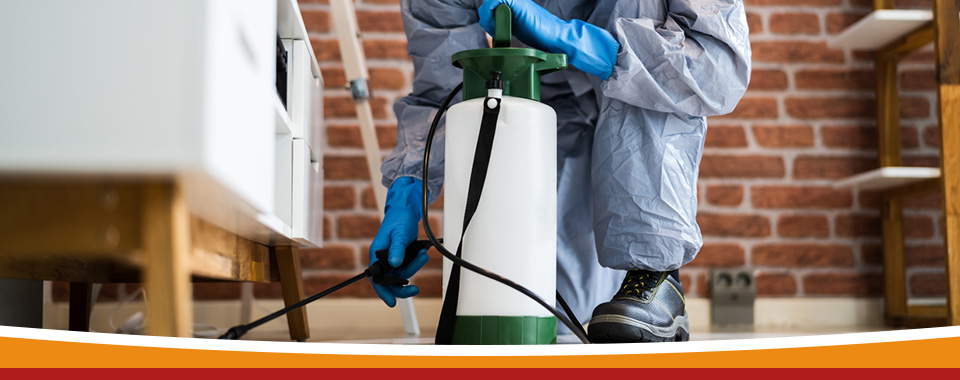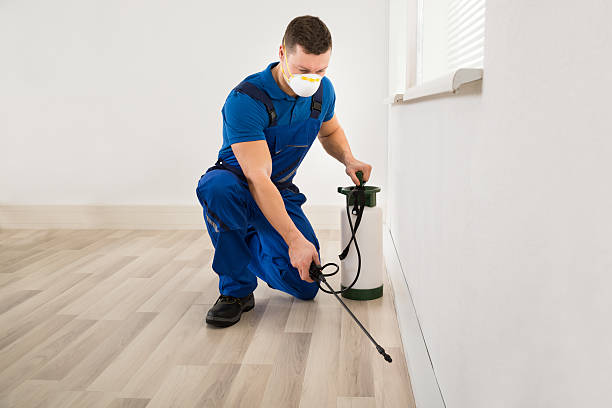Expert Bug Control Techniques for Long-Term Results
In the realm of parasite control, attaining sustained efficacy and lasting results calls for a careful method that transcends plain extermination. Specialist insect control techniques envelop a detailed technique that starts with a detailed examination and assessment, complied with by precise bug identification to recognize their habits patterns. The implementation of Integrated Pest Monitoring (IPM) principles, combined with eco-conscious therapies, develops the keystone of lasting insect obliteration. The real test lies in the continuous surveillance and maintenance of the dealt with areas, guaranteeing a pest-free setting for the direct future. By delving into the ins and outs of these strategies, a much deeper understanding of professional insect control techniques for withstanding end results arises.
Examination and Analysis
Upon getting in a residential or commercial property for insect control services, the initial action is a detailed inspection and analysis to determine the degree of the invasion and figure out one of the most effective treatment strategy. Specialist parasite control specialists are trained to carefully take a look at the premises, looking for indicators of pest activity such as droppings, nibble marks, nests, or any architectural damages. They will certainly additionally analyze the problems that might be drawing in parasites, such as food resources, water leaks, or entrance points.

Bug Identification and Actions

Furthermore, recognizing the habits of the identified bug is crucial to implementing efficient control measures. Understanding where pests nest, what they feed on, and their activity patterns can assist pest control experts design techniques to remove them successfully.
Integrated Parasite Monitoring (IPM)
Integrated Bug Management (IPM) approaches integrate several methods to regulate and avoid parasite invasions in a lasting and eco-friendly manner. exterminator. By integrating approaches such as biological control, habitat control, alteration of cultural methods, and using immune varieties, IPM aims to lessen making use of chemical pesticides
One of the essential concepts of IPM is the focus on avoidance. This proactive method entails surveillance pest populations consistently to detect any type of prospective concerns prior to they rise. By identifying insect issues early, pest control actions can be implemented swiftly and efficiently.
Moreover, IPM advertises using non-toxic insect control approaches whenever feasible. This can include utilizing natural predators of the insects, introducing helpful pests, or making use of scents to interfere with breeding patterns. By lowering dependence on chemical pesticides, IPM not just safeguards the atmosphere yet additionally helps preserve an equilibrium in the ecosystem.
Environmentally-Friendly Treatments
Implementing eco-conscious methods in pest control procedures can properly deal with invasions while focusing on ecological sustainability. Environmentally-friendly treatments concentrate on decreasing the impact of parasite control approaches on ecological communities, non-target organisms, and human health. These methods typically involve the use of natural predators, find here such as ladybugs or nematodes, to control pest populaces, lowering the demand for chemical treatments. Furthermore, techniques like habitat manipulation, such as adjusting dampness degrees or eliminating food sources, can help prevent insects without using unsafe materials.
An additional key facet of environmentally-friendly treatments is making use of natural and naturally degradable products that damage down rapidly without leaving harmful deposits in the environment. Organic insecticides derived from plants like chrysanthemums or neem supply reliable bug control while positioning minimal the original source threat to non-target types. Furthermore, utilizing methods like heat therapies or pheromone traps can target particular insects with precision, decreasing the general ecological influence of parasite control practices.
Continuous Monitoring and Maintenance
Continuous monitoring and maintenance are important parts of effective parasite control management. Continuous monitoring plays a vital function in making sure that pest invasions are detected very early and handled quickly. Regular examinations by trained specialists are needed to identify any signs of insect task, assess the efficiency of previous treatments, and make adjustments to the pest control plan as required. By checking parasite populaces gradually, insect control experts can track trends, prepare for possible problems, and execute safety nets to decrease the danger of future invasions.
In addition to tracking, upkeep practices are important directory for lasting pest control success. This includes applying proper cleanliness actions to eliminate potential food and water sources for insects, securing off access points to avoid bugs from getting in the premises, and dealing with any type of architectural concerns that can facilitate insect invasions (bed bug heat treatment). By integrating continuous surveillance and upkeep right into an incorporated bug monitoring approach, organizations can make certain a pest-free setting and guard their residential or commercial property against costly damage and health and wellness threats
Verdict
To conclude, making use of specialist insect control methods such as thorough inspection and assessment, accurate pest identification and understanding of their behavior, integrated parasite monitoring approaches, environmentally-friendly therapies, and continuous monitoring and upkeep are crucial for attaining long-lasting cause pest control. By applying these techniques, individuals can effectively take care of bug infestations and keep a pest-free atmosphere in a sustainable fashion.